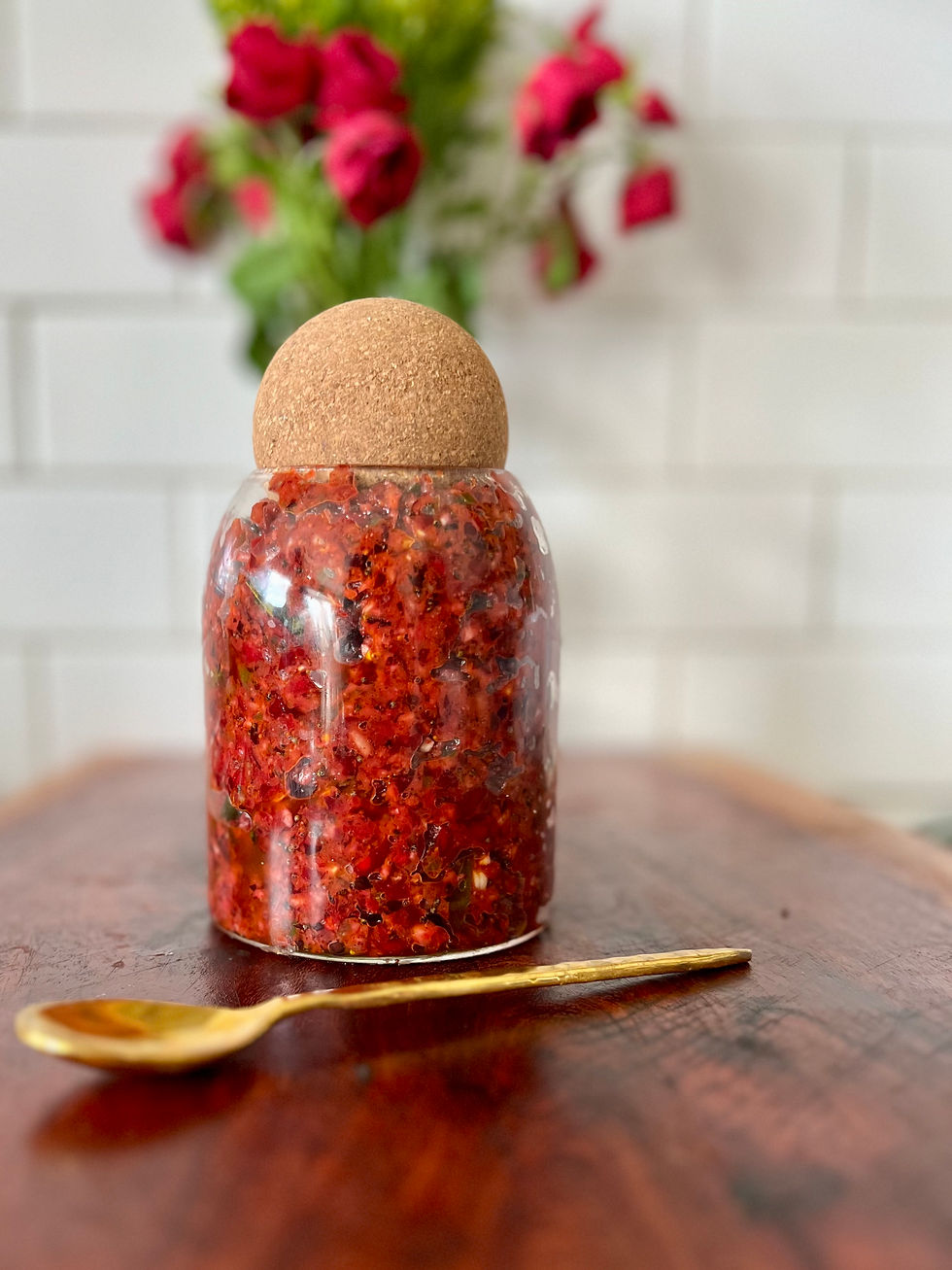Vibrant Beetroot Poha Pongal
- Savitha Enner

- Sep 19
- 3 min read
The comfort food that nourishes both body and soul can be flavorful and decadent. Today, I'm sharing a recipe that transforms the humble South Indian pongal into something extraordinary – Beetroot Poha Pongal. This vibrant dish combines the earthy sweetness of beetroot with the wholesome goodness of mung dal and the delicate texture of poha, creating a bowl of pure comfort that's as beautiful as it is delicious.The addition of shredded beetroot not only creates a stunning ruby-pink color but also adds natural sweetness and essential nutrients. The poha (rice flakes) gives the dish a wonderful texture that's different from the usual rice-based pongal, making it lighter yet equally satisfying.
This recipe is perfect for those looking to add more vegetables to their diet without compromising on flavor. It's also naturally gluten-free and vegan-friendly.
Ingredients
1/3 cup mung dal (yellow lentils)
1 cup shredded beetroot
1/3 cup thick poha/avalakki (rice flakes)
1/3 cup coconut milk
1 tablespoon coconut oil
Salt and crushed black pepper to taste
1/2 teaspoon cumin seeds
1/2 teaspoon minced fresh ginger
A few fresh curry leaves
2 green chilies, slit lengthwise
1/4 cup cashews
Step-by-Step Instructions
Preparing the Base
Create the aromatic foundation: Heat a heavy-bottomed pot/or a pressure cooker over medium heat and add half a tablespoon of coconut oil. Once the oil shimmers, add the minced ginger, slit green chilies, cumin seeds, and curry leaves. Sauté for about a minute until the mixture becomes fragrant and the cumin seeds start to splutter.
Cook the dal and beetroot: Add 2 cups of water to the pot, followed by the mung dal and shredded beetroot. Bring to a boil, then reduce heat and simmer until the dal becomes tender and the beetroot is cooked through (about 15-20 minutes). If you prefer, you can pressure cook this mixture for 3-4 whistles to save time.
Add the poha: Once the dal and beetroot are tender, ensure there's enough liquid in the pot (add more water if needed). Gently fold in the poha. Remember, poha cooks very quickly and will absorb liquid rapidly, so keep an eye on the consistency.
Finish with coconut milk: As soon as the poha softens but still retains a slight bite (about 2-3 minutes), stir in the coconut milk, salt, and freshly crushed black pepper. Turn off the heat immediately to prevent the coconut milk from curdling.
The Golden Cashew Topping
Prepare the cashew garnish: In a small skillet, heat the remaining coconut oil over medium-low heat. Add the cashews and fry them gently, stirring constantly, until they turn golden brown and become fragrant. This should take about 2-3 minutes.
Serve and enjoy: Ladle the warm pongal into bowls and top with the golden fried cashews for that perfect crunch and richness.
Tips for Perfect Pongal
Consistency matters: The final dish should have a creamy, porridge-like consistency. If it becomes too thick, add a little hot water or extra coconut milk.
Poha texture: Don't overcook the poha – it should be soft but still have some texture. Overcooked poha can become mushy.
Fresh ingredients: Use fresh curry leaves and ginger for the best flavor. The aromatics are what make this dish truly special.
Coconut milk timing: Always add coconut milk at the end and remove from heat immediately to prevent separation.
Serving Suggestions
This beetroot poha pongal makes a complete meal on its own, but you can pair it with:
A dollop of coconut chutney
Crispy papadums on the side
A simple cucumber raita for cooling contrast
Pickled vegetables for added tang
Storage and Reheating
Store leftovers in the refrigerator for up to 2 days. When reheating, add a splash of water or coconut milk to restore the creamy consistency, as the poha tends to absorb liquid over time.






Comments